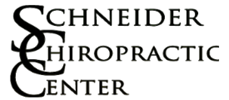
No Health App For Posture
Next time you are out, look to the person on your left and right, or better yet, look at the group of people just a short distance from you. What you may notice is the rolled shoulders and head forward posture. No, it is not the cell phones they have in their hands that they are staring intently into. Still, their now adapted postures due to those and other computer devices have become the absolute norm of our American generation’s lifestyle.
Although we are way ahead in technology, unfortunately, our generation is leading the way in spinal degeneration, arthritis, and chronic illnesses. Lower back pain is now so common that it affects almost 90% of adults, with the majority suffering from lumbar arthritis as a contributing factor to their lower back pain.
Let’s Examine Our Spine
Next time you are out, look to the person on your left and right, or better yet, look at the group of people just a short distance from you. What you may notice is the rolled shoulders and head forward posture. No, it is not the cell phones they have in their hands that they are staring intently into. Still, their now adapted postures due to those and other computer devices have become the absolute norm of our American generation’s lifestyle.
Although we are way ahead in technology, unfortunately, our generation is leading the way in spinal degeneration, arthritis, and chronic illnesses. Lower back pain is now so common that it affects almost 90% of adults, with the majority suffering from lumbar arthritis as a contributing factor to their lower back pain.
The spine is composed of twenty-four moving segments, known as vertebrae, and is classified into three regions: cervical (neck), thoracic (mid-back), and lumbar (lower back). Between the spinal vertebrae are intervertebral discs that act as shock absorbers. These discs are anchored to the vertebrae by the collagen fibers, allowing movement between vertebrae and the distribution of weight-bearing forces from one vertebra to the next in the spine.
The intervertebral discs often lose their elasticity and hydration with age and poor posture or as the result of an injury. The loss of elasticity decreases their ability to handle all the load-bearing forces of daily activity. When the discs thin, this changes the relative position of the vertebrae and the connective tissues throughout the rest of the spine. Over time, this thinning of the disc could progress to where the vertebra is effectively lying on the next vertebra. The loss of disc space often results in increased pain and decreased ranges of motion.
Ultimately, this pattern of degeneration can lead to microfractures and cartilage injury. Although the body tries to replace and repair the damage, it is often insufficient to overcome the degenerative process without assistance.
Could I Have Arthritis?
The classic symptomatology of arthritis includes joint pain, swelling, and stiffness. As with most forms of osteoarthritis, pain and stiffness are the most pronounced symptoms in the morning. However, as movement increases over the course of the day, the symptoms tend to subside. In general, if there is no evidence of nerve root compromise, pain from an arthritic spine is localized with possible dull aching.
If the spine’s degeneration continues into a diagnosis of spinal stenosis, patients may experience numbness, tingling, or weakness in the legs due to irritation of the lumbar nerve roots.
Available Treatment Options
Lumbar arthritis and back pain are usually responsive to conservative management.
During an acute attack of back pain, relative rest that avoids activities that aggravate the symptoms may reduce inflammation. In addition, drinking moderate amounts of water frequently while minimizing caffeinated drinks will also be beneficial in helping hydrate the discs.
Lifestyle modifications must be undertaken for long-term relief. This includes weight loss when appropriate, as it will tremendously reduce back pain due to the lumbar spine bearing the weight of the upper body and the head.
Exercise is also critical as it can help reduce weight while increasing muscle strength to support the lower back. However, consult your chiropractic physician before beginning any exercise or diet program.
Your chiropractor and their spinal rehabilitation team may prescribe spinal decompression in combination with rehabilitative therapy. In addition, working with a rehabilitative team to design a proper exercise regimen will help strengthen core muscles and minimize back pain.
We Can Help!
Our team understands that long-term back pain is physically debilitating and emotionally exhausting. So, to serve our community, we have built an expert team committed to working harmoniously to help you or your loved ones recapture the quality of life they desire – pain-free!

